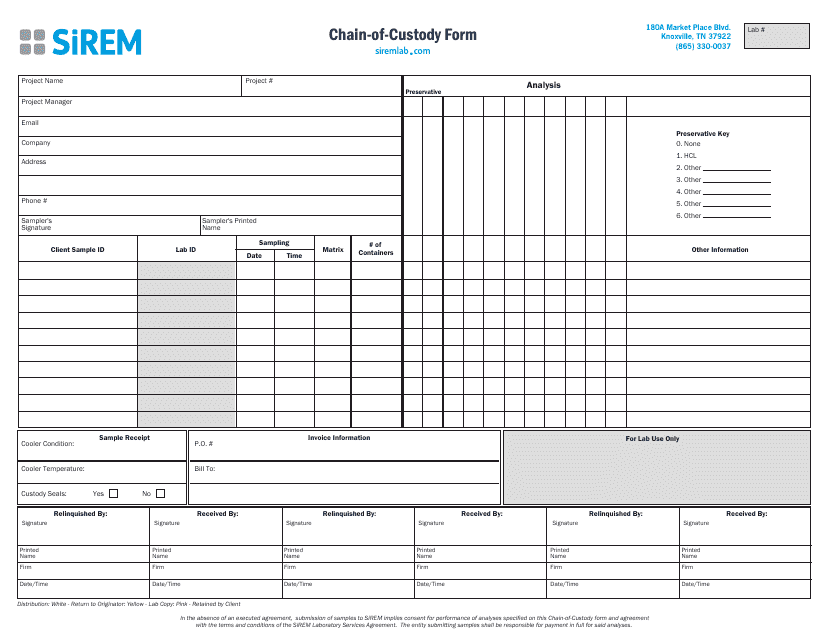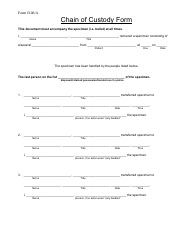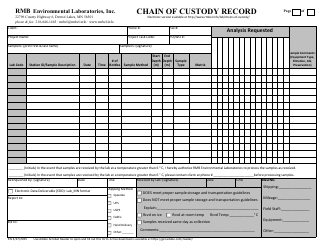Chain-Of-Custody Form - Sirem
FAQ
Q: What is a Chain-of-Custody form?
A: A Chain-of-Custody form is a document used to track the movement and handling of evidence or samples.
Q: Why is a Chain-of-Custody form important?
A: A Chain-of-Custody form is important because it ensures the integrity and admissibility of evidence in legal proceedings.
Q: What information does a Chain-of-Custody form typically include?
A: A Chain-of-Custody form typically includes details such as the date and time of collection, the name and contact information of the person collecting the evidence, the names of all individuals who handle the evidence, and any relevant identifying numbers or labels.
Q: Who is responsible for maintaining the Chain-of-Custody?
A: Every person who comes into contact with the evidence is responsible for maintaining the Chain-of-Custody, but it is usually the custodian of the evidence who ensures its proper handling and documentation.
Q: Can a Chain-of-Custody form be used in court?
A: Yes, a properly maintained Chain-of-Custody form can be used as evidence in court to establish the authenticity and reliability of the evidence being presented.
Q: Are there any specific requirements for completing a Chain-of-Custody form?
A: The specific requirements for completing a Chain-of-Custody form may vary depending on the jurisdiction and the type of evidence, but generally, it should be filled out accurately, signed and dated by each person who handles the evidence, and any transfers or changes in custody should be documented.
Q: Is a Chain-of-Custody form only used for legal purposes?
A: While a Chain-of-Custody form is commonly used in legal proceedings, it can also be used in various other contexts, such as scientific research, workplace drug testing, and forensic investigations.
Q: How long should a Chain-of-Custody form be retained?
A: The length of time a Chain-of-Custody form should be retained varies depending on the jurisdiction and the nature of the evidence, but it is generally recommended to retain the form for as long as the evidence is retained.
Q: What happens if there is a break in the Chain-of-Custody?
A: A break in the Chain-of-Custody can raise doubts about the integrity and reliability of the evidence. It is important to minimize the risk of any breaks or gaps in the Chain-of-Custody to maintain the evidentiary value of the evidence.



